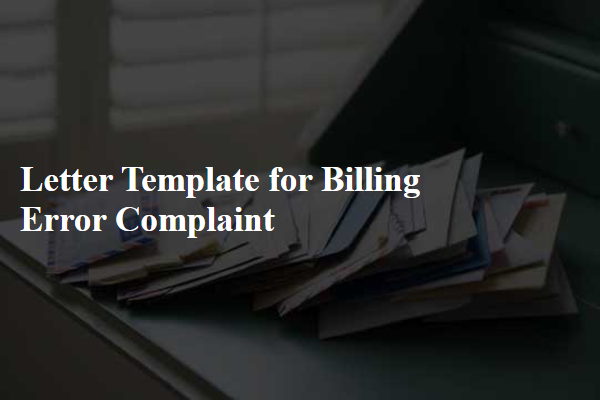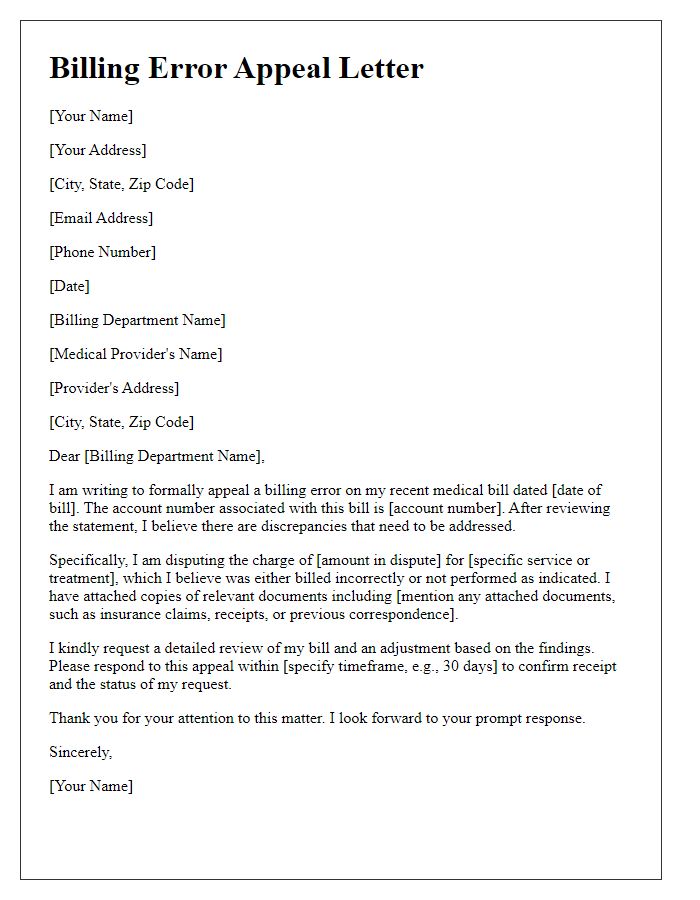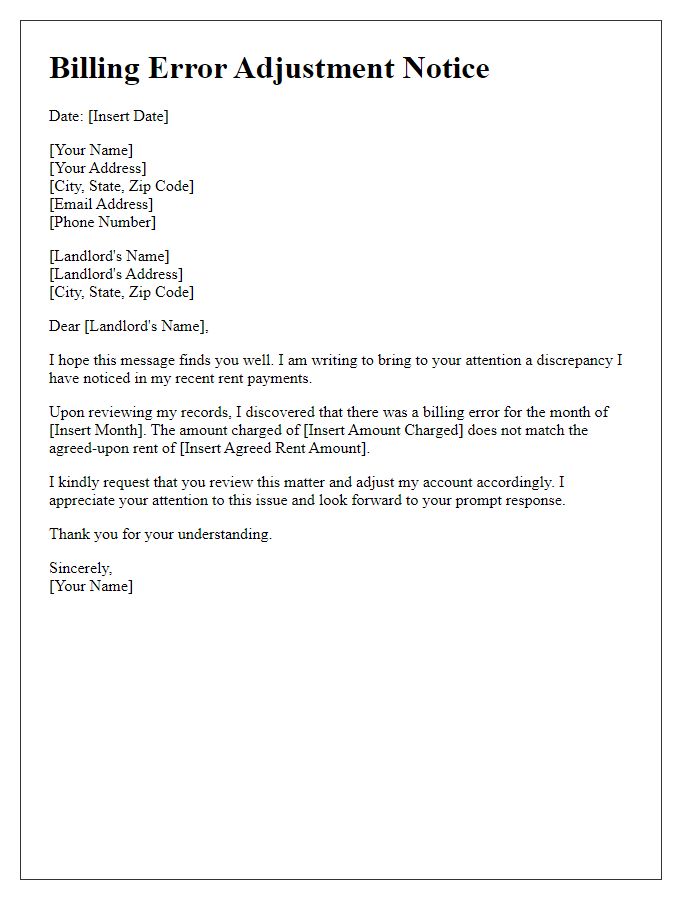Have you ever received a bill that just didn't add up? You're not alone; billing errors can be frustrating and confusing. In this article, we'll explore the essential steps to take when addressing a billing mistake and how to effectively communicate your concerns. So, let's dive in and ensure your voice is heardâkeep reading to learn more!

Clear Identification of the Billing Error
Identifying billing discrepancies is crucial for maintaining financial accuracy in monthly invoices, particularly in services such as telecommunications. A common error might include an unexpected charge, which can occur when billing cycles overlap, leading to double billing for the same service period, such as a $50 fee for internet usage in July that has already been covered in the June invoice. Another frequent issue involves incorrect rates applied, like a situation in which a promotional discount is not recognized, resulting in a higher-than-expected bill, such as a $90 charge instead of the agreed-upon $60. Clear documentation, such as previous statements and contract terms, is essential for articulating these errors and ensuring prompt rectification.
Account and Reference Details
Billing errors can cause significant frustration for customers. Clear account details, including account numbers and invoice references, are essential for accurate resolution. For instance, an account number (e.g., 123456789) relates directly to a specific customer's transaction history. Reference details like invoice numbers (for example, INV-2023-042) facilitate identification of the disputed charge. Providing the date of the transaction (such as October 15, 2023) can also aid in pinpointing the timeframe of the error. Additionally, attaching supporting documents, such as previous billing statements or receipts, enhances clarity and bolsters the request for investigation into the discrepancy. A well-defined complaint highlights the importance of timely corrections to maintain transparency and customer satisfaction.
Specific Documented Evidence
Billing errors can result in significant financial discrepancies for consumers and businesses. Accurate invoices are crucial for maintaining trust and transparency between service providers, such as telecommunications companies or utility providers, and their customers. Specific documented evidence, including detailed billing statements (showing charges, dates, and service descriptions), can help identify discrepancies. For instance, charges may appear on a bill dated January 2023 but relate to services not rendered or previously canceled subscriptions. Maintaining a thorough comparison with previous bills may reveal inconsistencies. Additionally, retaining communication records, such as emails or call logs with customer service representatives, can serve as crucial support when resolving disputes.
Request for Immediate Correction
Billing errors can lead to significant confusion and financial discrepancies for customers. A discrepancy noticed on the July 2023 statement from XYZ Utilities, specifically concerning an unexpected charge of $150 for electricity usage, requires immediate attention. Customers rely on accurate billing for budgeting purposes, and inconsistencies can disrupt their financial planning. The erroneous charge, which does not align with the average monthly usage of approximately $100, highlights the need for urgent correction. Providing detailed account records, including prior bills and usage patterns, is essential for the review process. Prompt resolution is crucial to restore trust and ensure accurate billing for future statements.
Contact Information for Follow-up
Billing errors can significantly impact an individual's financial reporting and overall budget management. Customers often receive statements from companies like utility providers or subscription services that contain unexpected charges or discrepancies. Such errors may involve incorrect billing amounts, duplicate charges, or services that were not rendered. For instance, a customer might notice a charge of $150 for a service that normally costs $100, prompting concern over billing accuracy. Addressing these issues typically involves contacting customer service departments, submitting detailed complaints through online forms, or communicating via email. Essential follow-up contact information includes department names, phone numbers, and dedicated email addresses, which assist in resolving inquiries quickly and efficiently.
Letter Template For Billing Error Complaint Samples
Letter template of billing error correction for telecommunications bills.













Comments